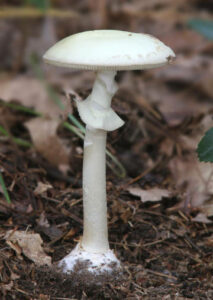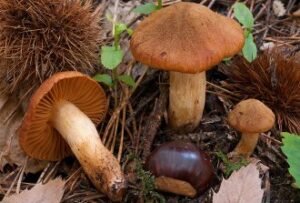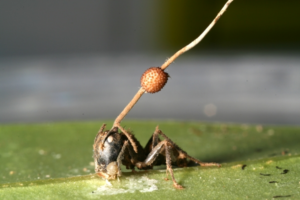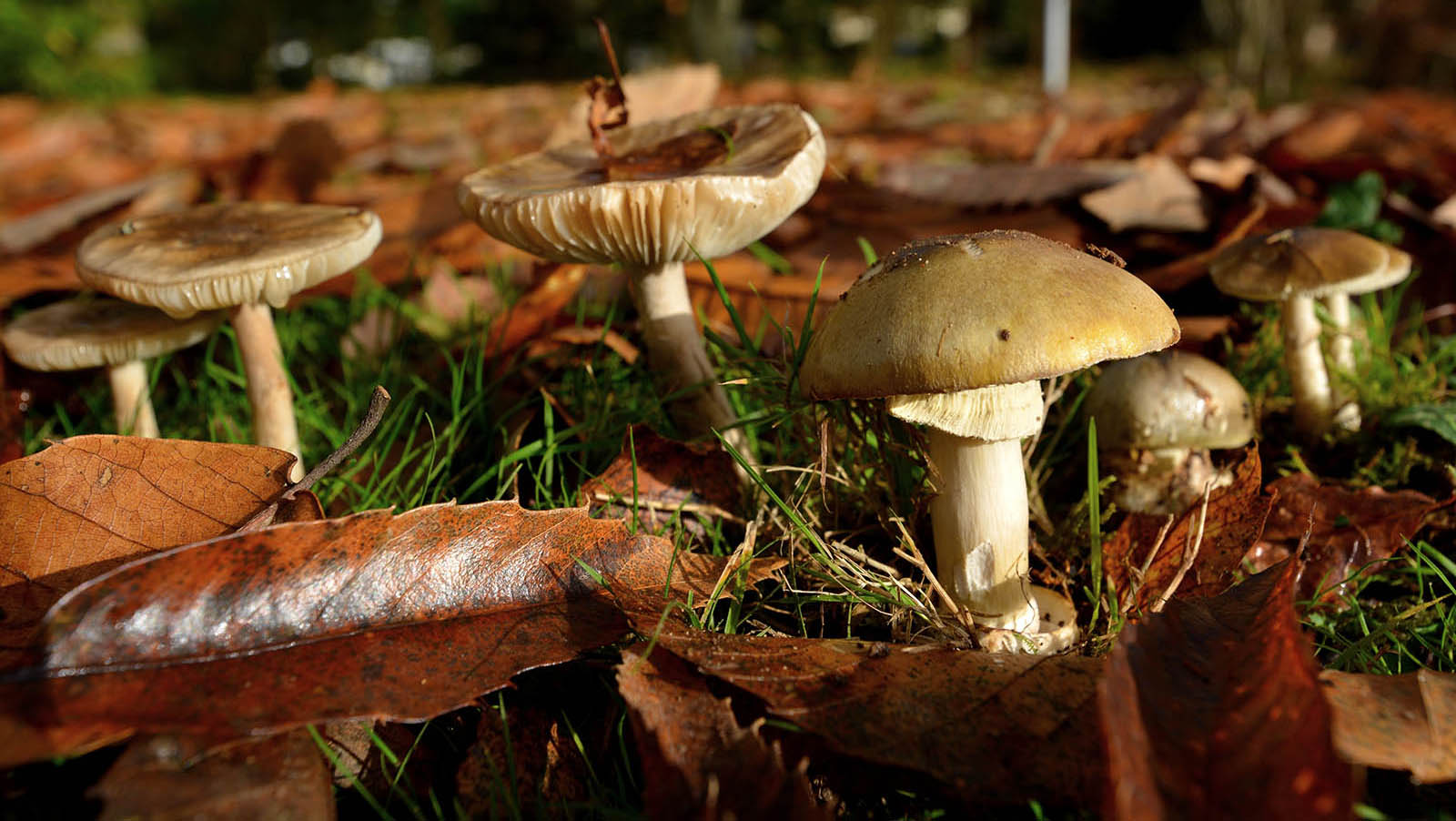What do mushrooms, frogs, and pufferfish all have in common?
Besides being naturally occurring toxic entities, they are also found all over the world. I’m sure the first humans to figure that out are doing well. For those of us in Southern California though, we don’t see many pufferfish and frogs at our feet, but I’m warning you now—beware of the mushrooms.
But how can the average (yet most delicious) pizza topping be so deadly? Don’t worry, the normal buttons and portobellos we eat are 100% safe. But for the rarer species, poison works the same way unripe fruit tastes weird to humans, or how ladybugs are bitter (not that I’ve tried any, of course) — to avoid getting eaten by curious animals and clumsy humans. We have even weaponized some mushrooms against animals—Amanita muscaria, a very poisonous mushroom, is used to kill houseflies when mixed with a sugar solution, and Lycoperdon (puffball) spores have been used to anesthetize bees, suggesting insecticidal properties.
This may all seem great, but think again. There is a hefty list of symptoms and effects we humans may suffer if we were to eat these mushrooms, including seizures, ranges of hepatitis (liver? More like liven’t), and renal failure. There are also about 6000 ingestions annually in the United States alone, and of those, over half are by curious children under 6 years old. Luckily, ingestions recorded in children only show pretty mild symptoms with just gastrointestinal upset, but the more severe poisonings are usually attributed to misidentification by adults when foraging in forests. Let’s take a look at two of the most common and deadliest toxins.

Amatoxins are one of the deadliest groups of chemicals. The mortality rate in western countries from amatoxins has gradually declined over the last few decades; however, a compilation of 205 cases of amatoxin poisoning treated during 1971-1980 indicated that the overall mortality was 22.4%, and went up to 51.3% in children under 10 years old. It’s no surprise that they are crazy powerful. A full-grown Amanita phalloides mushroom weighing about 20-25 g contains 5-8 mg of amatoxins. But as little as 0.1mg/kg body weight may be a lethal dose for adults, let alone children. It can also take between 6-24 hours for initial symptoms like cramping or vomiting to manifest and 5-8 days until death by liver or kidney failure, a time frame in which you might be improving. For the elimination of the toxin, activated charcoal is given to prevent reabsorption, as the carbon in the charcoal binds to the toxins and flushes them out in our feces.
The deadliest of the amatoxins is one called amanitin. It’s especially toxic because it inhibits RNA polymerase in eukaryotic cells, decreasing protein synthesis and killing cells. This impediment is especially damaging to our intestinal lining, liver cells, and kidneys. Amanitin is also found in many unrelated species of mushrooms, not just one, and we can blame an unknown ancestral fungal donor for that. A study by Dr. Hong Luo and colleagues studied how a set of biosynthetic genes that produces amanitin in these mushrooms may have originated from one donor mushroom and spread among unrelated mushrooms with overlapping habitats via horizontal gene transfer, a process where an organism transfers genetic material to another that is not its offspring through genetic recombination and DNA movement. This is taking a “toxic” family member to a whole new level.

Amanitin is not the only deadly shroom toxin to keep an eye out for. Orellanine is another notable candidate. It was first discovered in the 1950s when it was found to be the cause of mass poisoning in Poland. Symptoms of orellanine poisoning include renal damage and dehydration, and they can arise as late as 2 weeks after ingestion. Although it is not yet fully understood, orellanine may inhibit the synthesis of macromolecules such as proteins, RNA, and DNA, interrupt ATP production and reduce usage and reabsorption of peptides, polysaccharides, and other molecules, which, unsurprisingly, isn’t super great for the body.
Surprisingly though, a study done on orellanine toxicity in rats suggested there was genetic variability in how much resistance one can display, with females faring better. Sadly, we cannot say the same for humans. The ingestion of two to three mushrooms containing orellanine is enough to make someone dependent on dialysis for the rest of their life. What’s even scarier is that there is no known antidote for orellanine poisoning, and worst-case scenarios require a renal transplant. Recovery is super slow and renal failure isn’t a rarity; 9 of 22 (41%) of patients treated in Sweden developed chronic renal failure.

To make this even scarier, mushrooms aren’t merely waiting to surprise unsuspecting organisms if they dare get close! There is, in fact, a type of mushroom that can bring your Plants vs. Zombies nightmares into reality; the Ophiocordyceps unilateralis, or the zombie mushroom.
These parasitic fungi release spores that attach and penetrate into an unsuspecting ant’s exoskeleton moving along the forest floor, slowly taking over the ant’s brain. This infection extends a “death grip” on the ants and compels them to walk around randomly, convulse, and find a leaf to grip on in a humid microclimate to wait for their own death. Meanwhile, the fungus sustains itself on the ant’s innards and waits for the ant to die, so it can grow its mushroom out of the base of the ant’s head to infect new ants and propagate.
The infection is 100% lethal, however only a few ants in a colony are infected at any given time. What’s interesting is that the fungus doesn’t invade the brain itself. With ant colonization patterns and computer algorithms, researchers from Pennsylvania State University found that the fungi formed a tubular scaffolding within and around ants’ muscle bundles, suggesting that the fungus “mind controls” through bioactive compounds that interfere with the nervous system and muscles. Still, it’s scarily similar to what could happen to us if games like The Walking Dead or The Last of Us came to fruition.
With all that said and done, don’t let these dangers stop you from getting out there and exploring the woods, or even stop you from learning how to forage for mushrooms! Many people are gaining popularity in sharing their finds and tips for safe exploration on Instagram and TikTok. Don’t be afraid to step into the forest yourself, but it’s probably best to leave foraging to the experts–after all, poison doesn’t just come from pufferfish and frogs!

